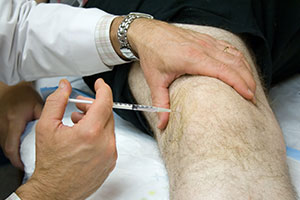-
What is Sclerotherapy?
Posted on September 14, 2015 by Vein Admin in sarasota sclerotherapy, sarasota vein treamentsVaricose veins are not only painful, but they don’t look very pretty either. One effective way to get rid of their smaller counterparts is to inject a solution directly into the vein itself, called sclerotherapy. It only takes about 10 minutes and is certainly less invasive than other more direct measures.
How does it work?
Sclerotherapy solution causes the vein to scar and eventually collapse, forcing blood to reroute through the healthier veins and the collapsed vein to be reabsorbed into local tissue. In a few weeks, the varicose vein will eventually fade away.
However; sometimes it may take up to a month. In some situations, several sclerotherapy treatments may be needed before a 100 percent difference is noticeable. This depends on the severity of the vein. If you’d like a more accurate answer, our physicians would be happy to sit down and do a consultation with you.
The history of scleotherapy and the treatment of varicose veins
In 1682, D Zollikofer injected an acid into a vein to induce blood clot formation. In 1853, it was determined that varicose veins could be treated by injecting perchlorate of iron into the problem area.
A year later in 1854, another man cured 16 cases of varicose veins by injecting iodine and tannin into them. However, due to various side effects, sclerotherapy was abandoned in 1894.
In the early 20th century, scientists tried to revive the practice. Carbolic acid and perchlorate of mercury were used, but side effects also caused them to be deserted. After WWI, French doctors developed sodium carbonate and then sodium salicylate. Quinine was also used during the early 20th century.
A breakthrough came in 1946 when scientists developed sodium tetradecyl sulfate (STS). In the ‘60s, George Fegan reported treating over 13,000 patients with sclerotherapy, which greatly advanced the procedure by focusing on the vein’s fibrosis instead of thrombosis—forming a blood clot inside of a blood vessel. In the 1980s, doctors began using duplex ultrasonography.
These practices still continue today.






